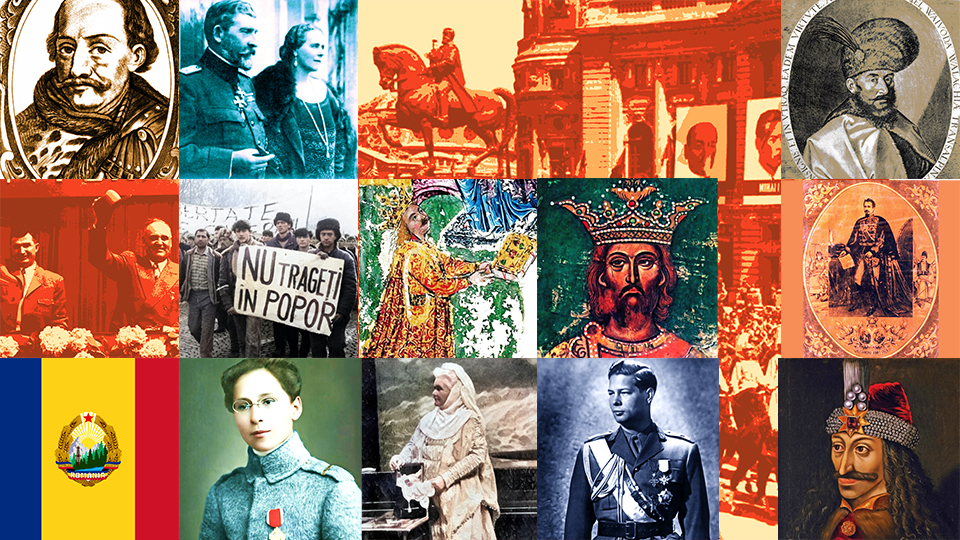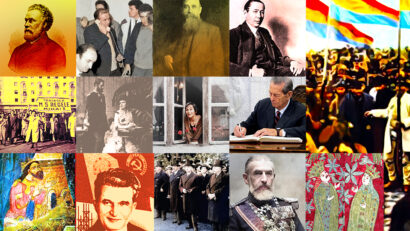Romanian prints for the Levant
Between the 16th and 19th centuries, the Romanian Principalities supported Christians in the Levant through printed church books in Arabic

Steliu Lambru, 08.09.2025, 12:00
Between the 16th and 19th centuries, the Romanian Principalities were part of the Eastern cultural world dominated by the Ottoman Empire. Located on the periphery of Islam’s expansion, the Romanian Principalities supported Christians in the Levant through church books. Thus, the first Christian Orthodox texts in Arabic appeared in the Romanian space.
Policarp Chițulescu is a specialist in rare old books, and it was from him that we learned about the importance of the prints from Wallachia and Moldova for Levantine Christians.
“Starting with Alexandria in Egypt and Jerusalem, going up to Beirut, there were Christian communities that couldn’t print these books in their own language. Why couldn’t they? Because the empire that ruled those territories subjected Christians to discriminatory economic and social conditions. For this reason, Christians were often forced to renounce their Christian faith because they could not pay their taxes, which were higher than those of others. On the other hand, they lost their churches because they could not pay the taxes imposed on them, and there was no question of printing books, that is, of cultivating the faith and maintaining it among Christian communities. For this reason, the patriarchs of Antioch, in particular, and Alexandria, but also those of Jerusalem and Constantinople, undertook very long and tiring journeys to countries ruled by Christian princes who were open to supporting and contributing to the survival of Christian communities in great difficulty.
The history of printed texts in Romania for Christians in the Levant begins at the end of the 17th century. Policarp Chițulescu:
“During the time of Constantin Brâncoveanu, the martyr prince, who had at his side a genius of typography, the Georgian Antim Ivireanul, also a martyr saint, two important figures in the history of Wallachia, it was possible to print Orthodox texts for Orthodox Christians in the Levant in Arabic for the first time in the world. The world’s first Orthodox book for them was printed in Snagov in 1701, it was the Holy Liturgies, with engravings, and one can see the care with which they were executed. Not only did the ruler of Wallachia finance these first books in Arabic, but he also financed the technology, as it was at the time. It seems that Patriarch Athanasius III Dabbas, a close friend of Brâncoveanu and Antim Ivireanul, took not only the first two books printed with Arabic letters in Snagov and Bucharest in 1701 and 1702, but also printing equipment and craftsmen to teach him how to use them. And so, he installed a printing press in Aleppo, Syria, whose production includes a gospel printed in 1706 and a psalter also from 1706, featuring a superb Brâncoveanu coat of arms. The coat of arms is, of course, proof not only of the funding received, but also of the gratitude of the Arab Orthodox community in Aleppo, Syria.”
Brâncoveanu and Antim also turned their attention to the Black Sea.
“Another result of Constantin Brâncoveanu’s patronage, this time for Georgian Christians, was a gospel printed in Tbilisi in 1709, signed by Antim Ivireanu himself. It is a dedication, a gift, to the financier of the faith in this area of the Caucasus, in present-day Georgia.”
As Policarp Chițulescu says, the Eastern spirit has always been more inclined towards contemplation. This was also evident in the printed works.
“The East, in general, was more interested in poetry and prayer, in mysticism, although it produced dogmatists of great value such as Saint John Damascene, from Damascus, Syria. The East avoided theological speculation and benefited more from catechesis through liturgy and prayer in church. That is why, for the first time in the world, the Arabic Orthodox press began with the liturgy and the breviary. Of course, the press continued with the Gospels with commentaries, the psalter, and the epistle on repentance, which appeared in Aleppo later, until 1711. There were also volumes of sermons and so on. Romanian prints were sources for Arabic prints, including from a graphic point of view, not only from the point of view of the liturgical text itself.”
The death of Constantin Brâncoveanu in 1714 did not stop the support for Christians in the Near East.
“The Romanian Principalities did not abandon the project of supporting Christians in the Levant, and another leader of the Orthodox mission was Patriarch Silvestru of Antioch. In the mid-18th century, he often visited Wallachia and Moldavia, where the rulers Constantin and Ioan Mavrocordat, sons of the great ruler Nicolae Mavrocordat, also financed the printing of books that we had barely known of before discovering them. The number of publications in Arabic that appeared in Iași and Bucharest increased in the mid-18th century. In fact, the Romanian contribution was much richer and more diverse. Patriarch Silvestru printed several books in Iași and Bucharest, some of which were prayer books, while others expressed the Orthodox position in the face of the challenges that arose when part of the Antiochian Church united with Rome in 1724.”
Romanians contributed to supporting Christians in the East in the 17th and 18th centuries by printing books. These were rays of hope for many who sought peace in their faith. (MI)





























